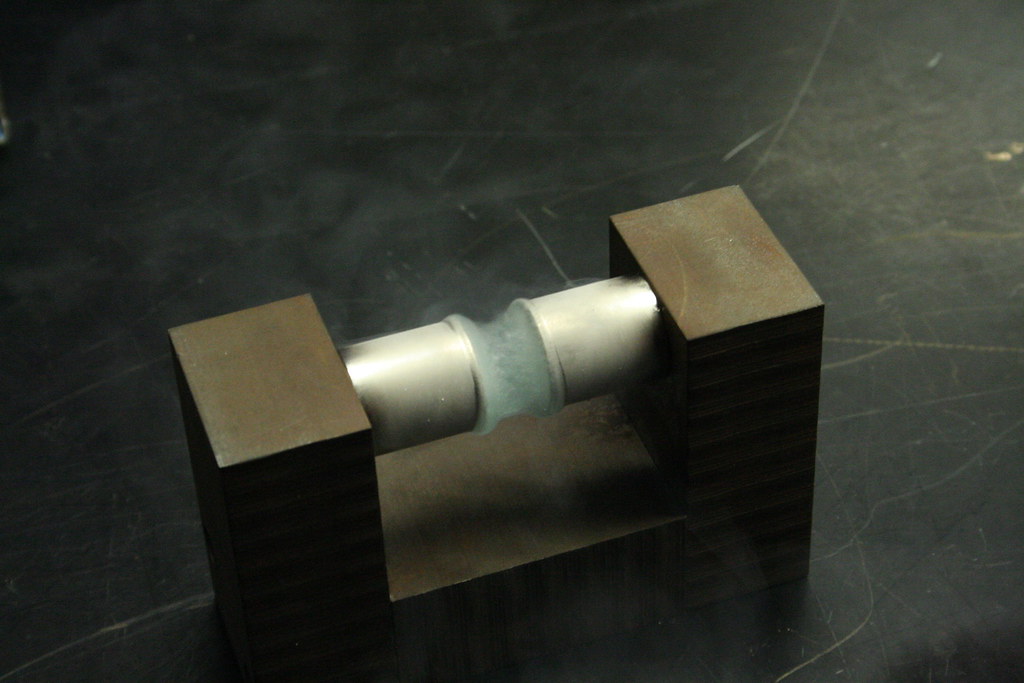Greg Jennings
New member
This was what you were talking about? How can you twist things so much and still feel good about yourself? Because you're lying for God, I guess?Yes... this is the pod of whale fossils I previously mentioned. They found whales up to about 40' long (13 meter) in a single layer of diatomite sedimentary rock. This type of sediment normally takes hundreds of years to accumulate a centimeter. The evidences of the rapid deposition are many...lack of bioturbation... lack of barnacle build-up, and wormholes.... and the remarkably pristine condition of even softer*tissue like the baleen.
300 whales isn't a pod. That is about 10 times bigger than any whale pod we've ever seen in modern times. That's years, maybe centuries or millennia worth of whale skeletons gathering slowly on the ocean (or bay, or brackish lake, or whatever other body of water) floor.
It doesn't say the boldnened words. Quit making things up. And if you were halfway educated in these matters, you'd understand it's not suggesting anything of the sort.Greg, the rapid burial was not "via natural, everyday processes ".
The authors admits that "current depositional models do not account for the volume of diatomaceous sediments". They say the pristine condition leads them to the conclusion the whales were rapidly buried within weeks or months at the most.
Why is it surprising to you that a previous depositional model got updated? Updates to previously existinginfo literally happens in science EVERY SINGLE DAY. That's because science doesn't care about confirming to creation myth, they care about getting it right.
Where does the study say that? Did you make something else up now?The authors suggest this happened in shallow embayments since other creatures were found with the whales such as penguins and sloths.
So why act like it is? You mislead Michael, among (perhaps?) othersYes... high tension wires fell on wet ground. No, its not normal for things to be fossilized in hours.
And surely you can provide some sort of documentation for this one, can't you? Or am I just supposed to take your word for it, like you wanted me to here when asked for that electric fossil study......But as I said, fossilization requires the correct conditions, and not thousands of years. For example there have been human artifacts fossilized under normal conditions such as a hat and a bag of flour.
Ok, well A) you're gonna need to prove that and B) if that's is correct (which I do think it is) then, as you admitted above, it has nothing to do with how real fossils are created.??? haaaaa. You make me smile. I said nothing about a study. I said I seen a root that had been fossilized in hours.
After all, part of the definition of a fossil is that it must be "naturally preserved."
I'm sorry, but how do you think those whales got there? According to the study, that I provided you and will provide at the end of this post again, their bodies did EXACTLY that. I can forgive you not knowing this, but more ancient whales were not nearly as fatty as modern species. Sinking was a bit easier. However, whales still sink today sometimes.Great! Then you 'know' fossilization normally requires RAPID burial. Things that float to the bottom of the ocean are eaten...bones and all.
"These taphonomic and sedimentary features suggest that rapid burial due to high diatom accumulation."
Perhaps you are unfamiliar with phytoplankton deposition, but it's the kind of thing they leads to chalk deposits, among many other things. The study clearly concludes that these whales were buried as the diatom skeletons accumulated around them.
The authors of the study strongly disagree with you, and they are actually educated in what they are studying, whereas you are not.The buried whales provide awesome evidence of a catastrophic event, rapid burial..... not slow gradual processes. The Bible mentions such an event.
"...rapid burial due to high diatom accumulation, in part by lateral advection into protected, shallow embayments, is responsible for the superb preservation of these whales"
"..whales within ∼1.5 km2 of surveyed surface were not buried as an event,.."
I swear they put those boldnened words in there just to try and make it clear to creationists that this wasn't evidence of a flood.
Did they say there was a catastrophic event? No, you are just making things up to fit your favorite bedtime story.
Not to mention, in the rough waters of a flood, why would there be a 80 m thick deposit of purely one type of microorganism? There would be other sediments mixed in, there would be HEAVY bioturbation (which you incorrectly believe to have something to do with bones) where instead we see NONE.
Here is the study. I strongly encourage anyone to read it so they can see 6days' truth-twisting in action: http://m.geology.gsapubs.org/content/32/2/165.abstract

